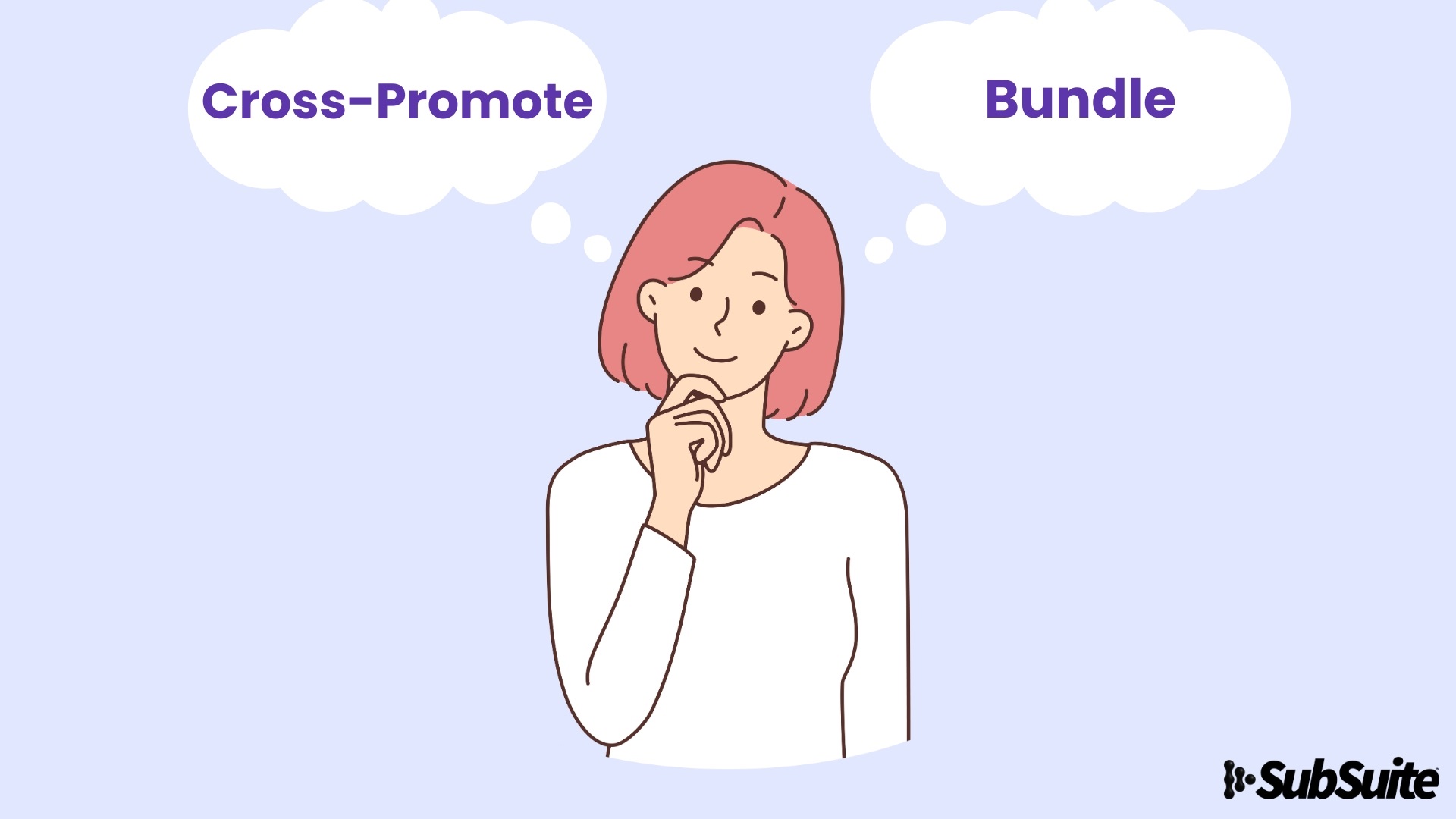Bundling vs. Cross-Promoting Subscriptions: What Brands Need to Know

For subscription brands looking to maximize growth, bundling and cross-promotions are two powerful strategies that can enhance your marketing efforts, boost conversion rates, and extend customer lifetime value (LTV). However, while both approaches can be effective, they come with their own set of challenges and benefits. In this blog, we’ll break down the key differences between bundling and cross-promotions to help you decide which strategy is the best fit for your brand.
What’s the Difference?
Bundling typically involves combining two or more services into a single package at a discounted price. This can be an attractive option for consumers looking to save money while accessing multiple services. But despite its appeal, bundling can be complicated to execute.
Cross-promotions, on the other hand, involve offering customers exclusive deals on complementary services during or after their initial purchase. Unlike bundling, cross-promotions allow consumers to choose the additional services they want, without being forced into a package.
The Challenges of Bundling
While bundling can create a strong value proposition, it’s not without its drawbacks:
- 1. Negotiation Complexity: Bundling often requires intense negotiations between multiple brands to agree on pricing, revenue sharing, and other terms. This process can take months, if not longer, to finalize.
- 2. Inflexible Pricing: Once a bundle is created, the price is usually set in stone. This inflexibility can be a disadvantage in a rapidly changing market where consumer preferences and willingness to pay can shift quickly.
- 3. Limited Consumer Choice: Bundles may include services that some consumers don’t want or need, reducing the overall appeal of the package. This can lead to lower conversion rates, as potential subscribers may shy away from paying for services they don’t intend to use.
- 4. Revenue Share Issues: Bundles often split the revenue unevenly among the participating brands. Since it’s difficult to determine which service is driving the purchase, smaller brands may end up receiving a smaller share of the revenue, even if their service is the main attraction for consumers.
The Benefits of Cross-Promotions
Cross-promotions offer many of the same advantages as bundling, but with added flexibility and fewer headaches:- 1. No Contractual Hassles: Cross-promotions can be launched quickly without the need for lengthy contract negotiations. This allows brands to partner up and start driving sales without getting bogged down in red tape.
- 2. Flexible Pricing: Unlike bundles, cross-promotions allow for dynamic pricing. Brands can easily adjust their offers based on consumer behavior, market trends, or promotional periods, making it easier to stay competitive.
- 3. Better Consumer Experience: Cross-promotions let consumers choose which additional services they want to add, rather than forcing them into a one-size-fits-all package. This flexibility increases the likelihood of conversion and improves overall customer satisfaction.
- 4. Simplified Revenue Sharing: Since consumers opt into additional services separately, revenue is more straightforward. Each brand receives revenue directly from the consumers who choose their service, eliminating the guesswork and potential imbalances of revenue sharing in bundled deals.
The Case for Both
While cross-promotions offer a simpler, more flexible approach, bundles aren’t entirely off the table—especially for larger, industry-leading players who can afford the complexities and negotiations. Bundles can still be effective in creating a solid value proposition for consumers who want to simplify their subscriptions or get the most bang for their buck.That said, even bundled services often need additional marketing support. Running cross-promotions with brands not included in the original bundle can help boost visibility and drive further sales. By combining both strategies, brands can maximize their marketing reach and cater to a wider range of consumer preferences.
The Bottom Line
Both bundling and cross-promotions can improve conversion rates by 30% (per Forrester) and LTV by 2.7X (per recharge) while reducing customer acquisition costs (CAC) through shared marketing resources. However, for brands looking to move quickly and stay agile, cross-promotions offer a simpler and more effective way to scale your partner marketing strategy.Platforms now exist that make it effortless to create and manage cross-promotions, allowing you to experiment with different DIY bundling efforts with multiple partners simultaneously. This ease of use means you can focus more on growth and less on logistics.
In the end, whether you choose bundling, cross-promotions, or a mix of both, the key is to remain flexible and responsive to your consumers' needs. As the subscription landscape continues to evolve, so should your marketing strategies. With the right approach, you can build stronger partnerships, attract more subscribers, and drive long-term success for your brand.










